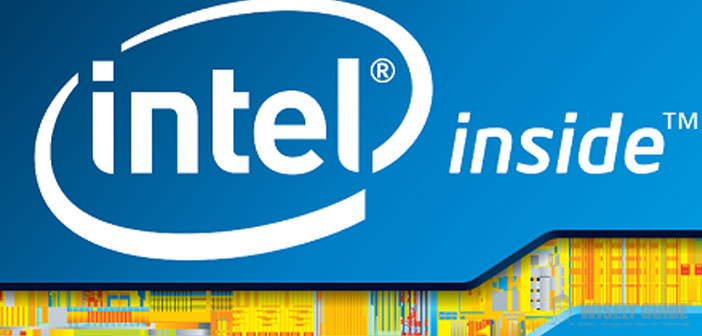All the new Intel Core 9th generation processors, desktops and notebooks
Intel extends its family of 9th generation Core CPUs with many new models, destined for both desktop and notebook systems.
Intel has updated its ninth generation Core processor range by introducing new versions specifically designed for higher-end notebook systems. We are talking about the models characterized by the suffix H, which in the top-of-the-range versions introduce for the first time in systems of this type an 8-core architecture.
The following table shows the specifications of the 6 new CPUs that Intel is offering today to its partners producing notebook systems:
|
Template |
Clock base | Turbo Clock | Core | Threads | TDP | Cache |
| Core i9-9980HK | 2.4GHz | 5GHz | 8 | 16 | 45W | 16MB |
| Core i9-9880H | 2.3GHz | 4.8GHz | 8 | 16 | 45W | 16MB |
| Core i7-9850H | 2.6GHz | 4.6GHz | 6 | 12 | 45W | 12MB |
| Core i7-9750H | 2.6GHz | 4.5GHz | 6 | 12 | 45W | 12MB |
| Core i5-9400H | 2.5GHz | 4.3GHz | 4 | 8 | 45W | 8MB |
| Core i5-9300H | 2.4GHz | 4.1GHz | 4 | 8 | 45W | 8MB |
The Core i9-9980HK proposal is the top one, with a total of 8 cores and the possibility to go up to 5 GHz as a peak clock frequency via Turbo boost technology. The TDP is equal to 45 Watts for all CPUs, with versions starting from 4 cores passing to the intermediate solution of the 6 cores. Of course, support for HyperThreading technology is not lacking for all processors, which allows you to manage a number of threads twice as many as cores.
Today, Intel is also introducing new versions of the ninth-generation Core processor for desktop systems: the range here expands, with the new models joining those already presented last fall.
|
Template |
Clock base | Turbo Clock | Core | Threads | TDP | Cache |
| Core i9-9900 | 3.1GHz | 5GHz | 8 | 16 | 65W | 16MB |
| Core i9-9900T | 2.1GHz | 4.4GHz | 8 | 16 | 35W | 16MB |
| Core i7-9700 | 3GHz | 4.7GHz | 8 | 8 | 65W | 12MB |
| Core i7-9700T | 2GHz | 4.7GHz | 8 | 8 | 65W | 12MB |
| Core i7-9700F | 3GHz | 4.3GHz | 8 | 8 | 35W | 12MB |
| Core i5-9600 | 3,1GHz | 4.6GHz | 6 | 6 | 65W | 9MB |
| Core i5-9600T | 2.3GHz | 3.9GHz | 6 | 6 | 35W | 9MB |
| Core i5-9500 | 3GHz | 4.4GHz | 6 | 6 | 65W | 9MB |
| Core i5-9500T | 2.2GHz | 3.7GHz | 6 | 6 | 35W | 9MB |
| Core i5-9500F | 3GHz | 4.4GHz | 6 | 6 | 65W | 9MB |
| Core i5-9400T | 1.8GHz | 3.4GHz | 6 | 6 | 35W | 9MB |
| Core i3-9350K | 4GHz | 4.6GHz | 4 | 4 | 91W | 8MB |
| Core i3-9320 | 3.7GHz | 4.4GHz | 4 | 4 | 62W | 8MB |
| Core i3-9300 | 3.7GHz | 4.3GHz | 4 | 4 | 62W | 8MB |
| Core i3-9300T | 3.2GHz | 3.8GHz | 4 | 4 | 35W | 8MB |
| Core i3-9100 | 3.6 GHz | 4.2GHz | 4 | 4 | 65W | 6MB |
| Core i3-9100F | 3.6 GHz | 4.2GHz | 4 | 4 | 65W | 6MB |
| Core i3-9100T | 3.1GHz | 3.72GHz | 4 | 4 | 35W | 6MB |
Also in this case the versions with lower consumption stand out, with TDP equal to 65 Watts or 35 Watts depending on the model. The only exception is the Core i3-9350K model, which boasts a TDP of 91 Watts with a base clock frequency of 4 GHz and a Turbo of 4.6 GHz.
Overall Intel, thanks also to new Pentium and Celeron models always based on ninth generation architecture, it completes the range of its desktop and notebook CPUs. They are all still built with 14-nanometer production technology, based on the same architecture as the eighth-generation Core solutions.
The latest refinement of the production process has made it possible to obtain a slight increase in the base clock and Turbo frequencies, pushing the potential of this production technology to the limit while awaiting the debut of the 10-nanometer process.
To characterize these new processors support for Intel Optane technology, the new Intel Wi-Fi 6 controllers and a maximum of 128 Gbytes of system memory. These features are worth as much for desktop proposals as for notebooks.

